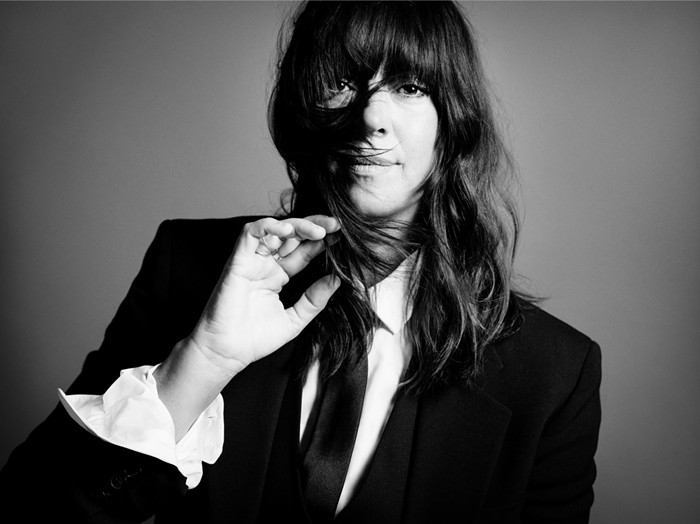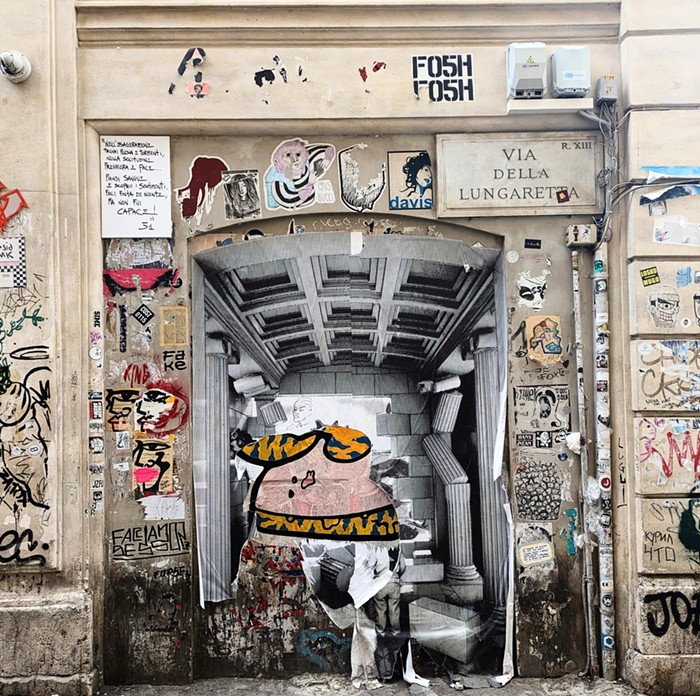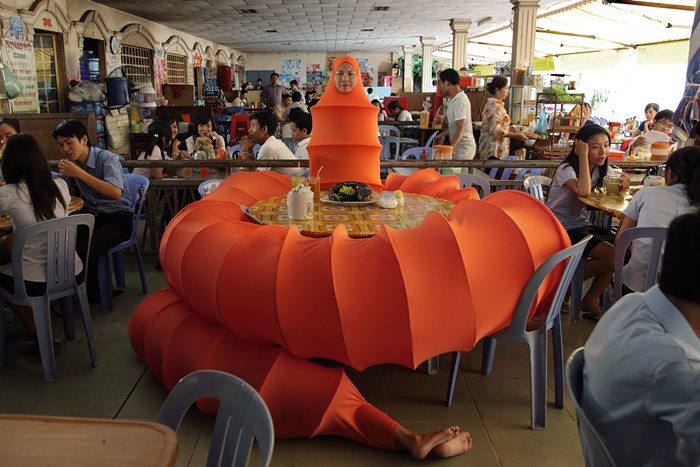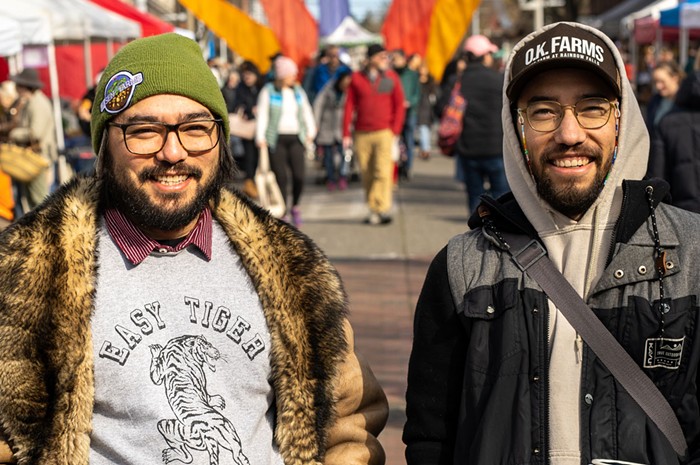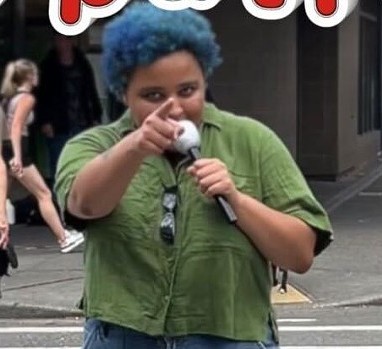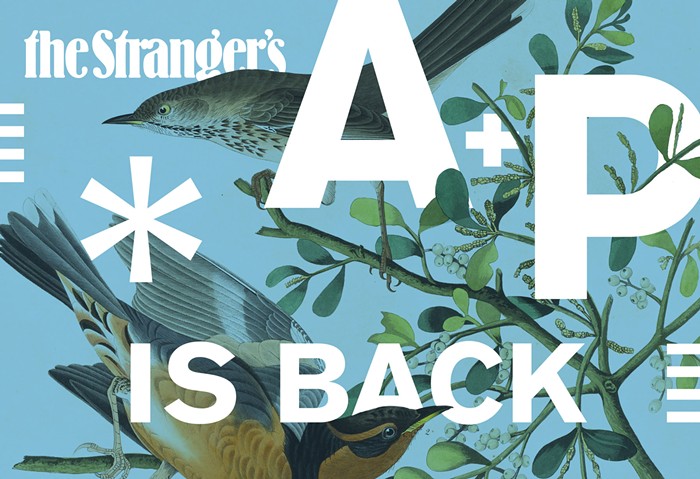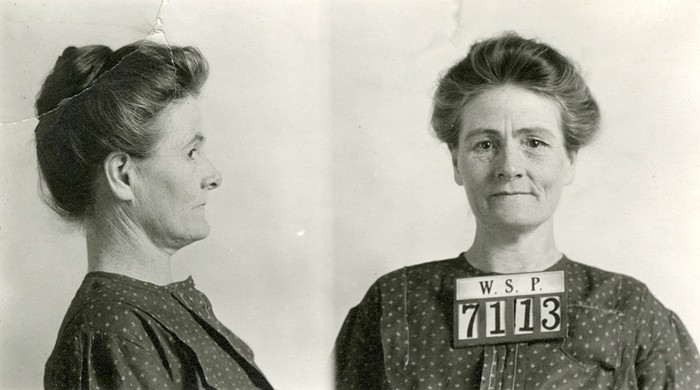If the Seattle Art Fair is Seattle's answer to the Venice Biennale, then perhaps Out of Sight is our answer to that time Yayoi Kusama stood outside the 1966 Biennale peddling shiny mirrored balls for $2 each. She was not invited to exhibit as an official participant, but in retrospect, her performative critique of the art world's dual obsessions with profit and narcissism was probably one of the more memorable things that happened that year.
Established in 2015 as an unofficial addendum to the Seattle Art Fair, Out of Sight is an annual survey of Northwest art that thrives, as the name implies, in the margins outside the commercial gallery system inscribed by the official fair. As a result, it's a place for artists to take risks and show edgier, more exploratory work. But it's also a great chance to catch emerging artists destined to be scooped up by galleries—(before Seth David Friedman was represented by Season Gallery, his intimate, biomorphic sculptures were featured at Out of Sight).
The original Out of Sight location inside King Street Station is now occupied by the Office of Arts and Culture, so organizers are currently renovating a brand new gallery space inside the historic Schoenfeld building at 115 South Jackson. (Full disclosure: my band, Hair and Space Museum, just agreed to play their opening party.) Curated by Greg Lundgren, Ben Heywood, S. Surface, and Justen Siyuan Waterhouse, this year's Out of Sight promises to be a destination in its own right, full of promising young artists, seasoned veterans, and just about everyone in between. Here are a few things that are high on my list to check out:
Tracy Rector, Ch'aak' S'aagi (Eagle Bone)
Ch'aak S'aagi (Eagle Bone) is a five minute experimental short film about being unapologetically indigenous by 2016 Stranger Genius Tracy Rector. It opens with a welcome to the land in the Lushootseed language from Ken Workman, a great-great-great grandson of Chief Seattle, and continues through lush landscapes and ceremonies framed as a journey of remembrance and reflection from the original inhabitants of the Pacific Northwest.
Throughout the film, an original spoken word narration by Tlingit artist Nahaan asks viewers to question who we are, and reflect on our connection to life and spirit. Rector's movie is required viewing for anyone who would call this region home.
Bruce Bickford, Twin Peaks Town
Bruce Bickford is one of the greatest artists ever to work with claymation. Inspired by the stop motion films of Ray Harryhausen and other early masters of the medium, Bickford got his first 8mm camera in 1964 and rose to fame with the animations he produced for Frank Zappa in the 1970s. In the early 2000s, he created a scale model of the entire town of Twin Peaks, complete with the Double R Diner, Snoqualmie Falls, and a tiny Laura Palmer - wrapped in plastic, all meticulously sculpted out of clay.
Born and raised in the Pacific Northwest, Bickford was intrigued by the similarities between Twin Peaks and the real-life story of the Green River Killer, which was still an unsolved mystery at the time. These models will be on view in their entirety at Out of Sight, offering a rare and exciting glimpse into the creative process of a living legend.
Inye Wokoma, This Is Who We Are
A lifelong resident of Seattle's Central District, Inye Wokoma's work as an artist and filmmaker serves as an ongoing archive of his family's history, revealed through photographs, oral histories, objects, and documents. Although he has not moved physically, the transformation of his neighborhood through gentrification and displacement has caused what he calls "a kind of social dispossession." In recent solo exhibitions at the Frye and Northwest African American Museum, Wokoma has chronicled the physical, spiritual, and psychic toll of this shift, weaving his archives into stories that are both personal and indicative of larger narratives. Through his skills as a photographer and storyteller, Wokoma's fragments of history have become an emotionally resonant meditation on loss, transformation, and resistance.
Ellie Dicola, crazy 4 u
How can you tell if your girlfriend is crazy? Is her lipstick applied like theater makeup? Is she intolerant of normal dude behavior? Does she love reading Sylvia Plath?
In Ellie Dicola's new multimedia web project, many-headed beasts like the one ridden by the Whore of Babylon glide across screens loaded with glittering slogans like these, gleaned from internet listicles that demonstrate the ubiquity of "crazy" as a catch-all for women who are confident, assertive, or demand respect in heterosexual relationships.
One page uses a viral video called the Hot Crazy Matrix—a "guide to women" created by a middle-aged white male lawyer—as a point of departure. Other pages focus on the intersection of mental illness and capitalism: the labor people with anxiety or depression are routinely forced to perform to pretend everything's okay in order to avoid being cast out on the street to die.
"Working on the project I realize how much it's just tapping the surface," Dicola says. If you're an artist who takes the way our society stigmatizes mental illness as your subject, perhaps the only thing you'll never have to worry about is running out of material.
Barry Johnson, Untitled 26
Barry Johnson is a visual artist who works in painting, sculpture, video art, installation, and illustration. Most recently, he's been working on a series of paintings of men who have their faces obscured by various compositional devices—an artful crop here, a strategically draped hoodie there, or even a framed picture-within-a-picture affixed to the painting, almost humorously calling attention to its own role in the obfuscation.
Instead of seeing faces, we are given sumptuous pastel color fields and decorative arrays of found objects that hint at narratives. Untitled 26 incorporates roofing materials, skewer sticks, and a painted segment of a branch, all positioned behind the back of a figure rendered in house paint with loose, confident strokes. The resulting image is simultaneously mysterious and familiar; anonymous and specific. There is a strength in this tension that makes me curious to see more of Johnson's work.
Jim Woodring, Vrittis
Visionary cartoonist and 2010 Stranger Genius
Jim Woodring uses pen and ink to create undulating, psychedelic worlds. These worlds are inhabited by creatures that are part landscape, and landscapes that are part creature—eyes and mouths and throats and wings springing forth from unconscious goo so vast as to seem endless. Earlier this year, a solo exhibition at the Frye featured large scale works created with a giant pen handcrafted by the artist. Vrittis—named for a yoga term for whirlpools caused by disturbances in the medium of consciousness—might be smaller than these drawings, but it's packed with every bit as much excitement and then some.Natalie Krick, Shine
As a teenager, Natalie Krick loved dressing up and photographing herself in ways that emulated the models she saw in magazines. As a professional artist, her work deals with the conflict between the desire elicited by these aestheticized images and the way the sexualization of women functions within the context of capitalism.
With Shine, Krick creates an image that appears, at first glance, to depict a pair of legs slick with an oily, reflective sheen, evoking a sun-soaked repose that would not be out of place in a marketing brochure for a luxury resort. But further inspection reveals this first impression to be a lie.
Even though I know my eyes are playing tricks on me, this photo still makes me want to take a dip in a refreshing body of water. (Knowing that something we've perceived is a lie doesn't eliminate the seed planted by the image. What's that about?)
Jazz Brown, unflinching composure
In the 3rd millennium BCE, ancient Egyptians perfected the production of a synthetic pigment that would come to be known as caeruleum by the Romans and Egyptian Blue by English archaeologists. This distinctive pigment—ranging from a light periwinkle to a full-bodied blue depending on the amount of copper present in the mixture—was used to color walls, pots, statues, beads, and countless other objects. On a color wheel, it stands almost directly opposite the golden sheen of sun-baked stone, resulting in a striking union of opposites when employed in a temple or household. Earth and sky. Temporality and eternity.
This color combination leaps to mind when viewing unflinching composure, a large acrylic painting by Jazz Brown, whose minimal vocabulary of straight lines gives rise to compositions that embody both dynamism and balance; thesis and antithesis. In his words, this painting is about "the understanding that serenity is the ability to grasp nothing." Dig.
Elias Hansen, It's down through the bushes. I'll lead the way.
Elias Hansen's installations have the aura of a lo-fi alchemist's laboratory nestled in some wooded hideaway. Colorful light fixtures selectively illuminate precarious assemblages of buckets and broken glass while bulbous beakers stand silently on wooden shelves, apparently in possession of strange, embodied secrets. Seven years ago, Hansen was a Northwest artist represented by the now-legendary Lawrimore Project. After a stint in upstate New York, he's recently resettled in Bellingham. It's good to have him back. There's something about the combination of meticulous glasswork and comfortably-uncomfortable DIY weirdness that makes his work feel quintessentially at home in the Northwest.
FEMAIL, AMPM
A few short decades ago—before the rise of fast fashion and the "end it don't mend it" ethos of consumption, it was common practice to recycle every scrap of fabric, creating colorful quilts, handmade toys, and upcycled clothing embedded with tangible memories of the past.
The imaginative handmade garments and sculptures of FEMAIL's AMPM hearken back to this time, while simultaneously looking like costumes and set pieces for a post-apocalyptic opera set in a dystopian future.
FEMAIL is the artistic collaboration of Camilla Carper and Janelle Abbott: two friends based in San Francisco and Seattle, respectively, who make clothing and art by sending works back and forth through the mail. The project is, in their words, "an illustration of the individual's journey through life," using objects and garments to evoke the fragmented memories and experiences that linger after they've gone, providing the foundation for both the present and future.

